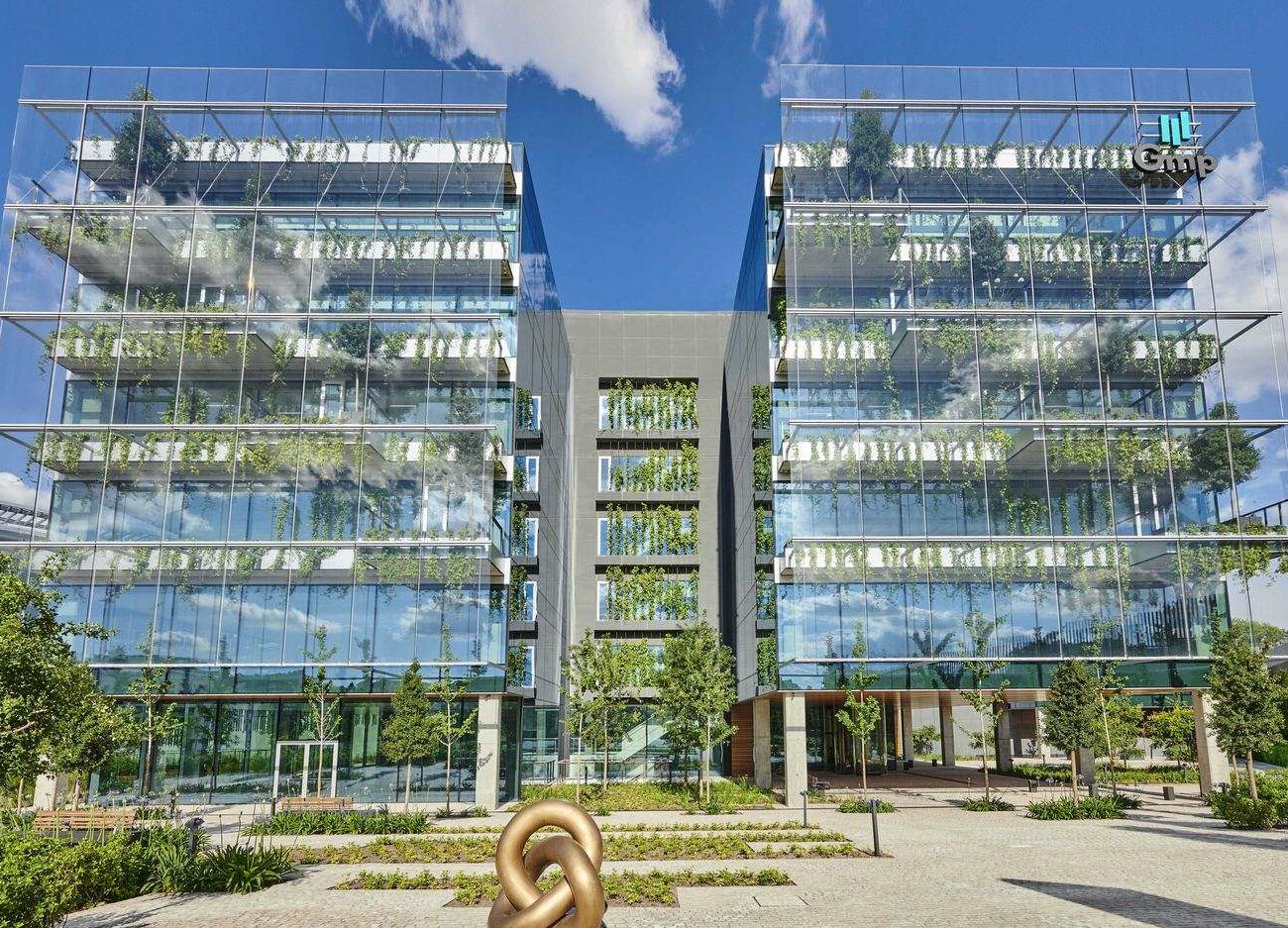The office complex located on Quintanadueñas street in Las Tablas, whose architectural design is by O&L (Órtiz y Leon), consists of a 5-floors building plus roof above ground, first floor and two basements below ground level. The above-ground floors are arranged in three rectangular modules connected to each other by means of communication cores; below ground, the slabs cover the entire plot.
The architectural and geometric characteristics of the building have determined the line of the structural approach. In the basements, a structure of concrete pillars and slabs is proposed to optimize the convenient distribution of parking spaces. In the above-ground area, a structure of concrete pillars and post-tensioned concrete slabs is proposed according to a 7.20 m x 16.00 m grid.
The variability of the geometry and the conditioning factors of each of the building’s floors makes it necessary to use different structural typologies to resolve the horizontal structure on each of the levels. In general terms, 2 typologies can be distinguished:
1) The floor slabs of the below-ground levels have different spans, whereby solid slabs in reinforced concrete will be executed, with thicknesses between 25 cm and 35 cm depending on the spans of each span.
2) Similarly, the slabs of the access floors, or those with gardens, will be made of reinforced concrete slabs with thicknesses between 30 cm and 35 cm depending on the span and the soil load of the garden areas.
3) The standard floors above ground level are supported on a grid of columns with spans of 7.20 x 16.00 m, so the structural solution consists of a series of post-tensioned flat beams of 0.50 m depth and 3.60 m width, which bridge the 16.00 m span, and solid slabs of 0.15 m thickness and 3.60 m width, which bridge the span between the beams.
4) The structural scheme of the roof is similar to the previous one, being the post-tensioned flat beams of 0.60 m depth and 3.60 m width, and the solid slabs of 0.18 m thickness and 3.60 m width.
It has 3 levels below ground level, first floor and 8 levels above ground level plus two levels of cassettes. The plot where the projected structure will be built was occupied by a building that was demolished in its entirety, this being one of the major difficulties of the project.
This singularity of the structure, not being able to demolish the existing retaining walls, was justified by the fact that they were located right on the perimeter of the plot, which was also surrounded by roads with high traffic density. Therefore, they were kept as retaining elements and as support for the slabs below ground level. The need to use the existing walls, all this makes it necessary to provide a provisional shoring system to ensure the stability of the walls after demolishing the existing slabs and before executing the slabs of the new building. Subsequently, the footings of the existing wall will be cut by ramming, in the places where it will be necessary to execute piled foundations, in order to proceed with the execution of the micro foundations and their pile caps. The provisional shoring system designed is compatible with the execution of the cuts, guaranteeing the stability of the walls.
The below-ground and first floor levels have spans of less than 10 m. They have been resolved with solid reinforced concrete slabs. Between the first and the sixth level above ground, the typology of the floors is quite regular, with some slabs having some specific singularities due to the recessing of the edges of the slab to generate double-height spaces. The need to recess the floor slab at these levels is resolved by means of floor slab overhangs on the upper levels. In these floors, the typical spans are 15.50 m x 8.10 m. The need to provide sufficient height between the lower face of the floor slab and the false ceiling for the passage of installations and to provide sufficient clear height to the floors, imposes a maximum slab depth of 40 cm. A slab system has been chosen with post-tensioned flat beams in the long direction, with a depth of 40 cm and with sufficient width to provide the necessary prestressing, and with thinner slabs (between 15 cm and 22 cm depending on the area) in the perpendicular direction. This solution makes it possible to reduce the weight of the slab compared to the solid slab solution and thus to optimize the dimensions of the columns and the concrete quantities in the slabs.
The typology of the seventh floor of the building is conditioned by the need to shore a series of pillars (some of which can drop up to 200 tons), due to the setback of the facade at this level. The architectural constraints of the project make it impossible to remove beams with the required depth to carry out this shoring. Therefore, we have resorted to a solution of a post-tensioned solid slab with a depth of 55 cm, this being the only option compatible with the depth constraints imposed by the architectural needs. The upper levels of the building (eighth floor and two storeys of cassettes), with spans of around 12 m, are resolved with solid post-tensioned slabs.

Calle Núñez de Balboa, 120
28006 Madrid
Spain
Tu privacidad es importante
Nosotros y nuestros partners usamos cookies para personalizar el contenido y pueden recopilar información no confidencial. Para más información visita las Condiciones de uso.